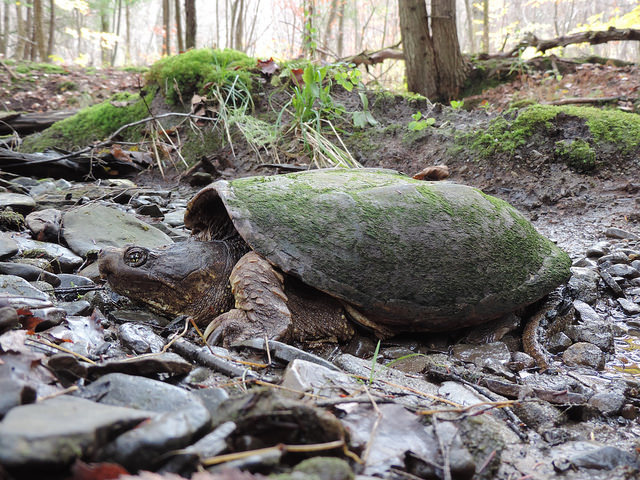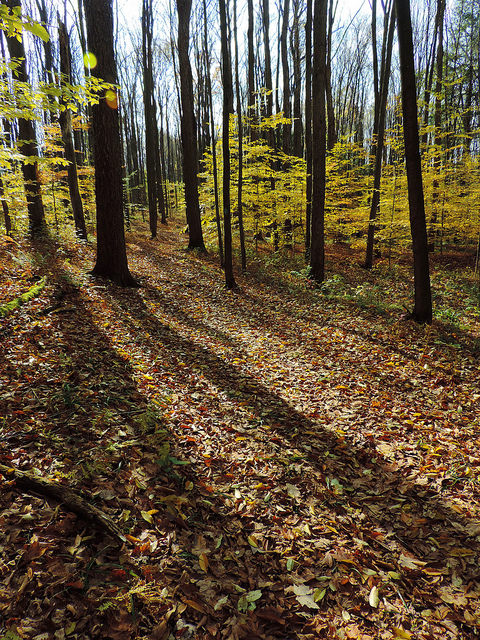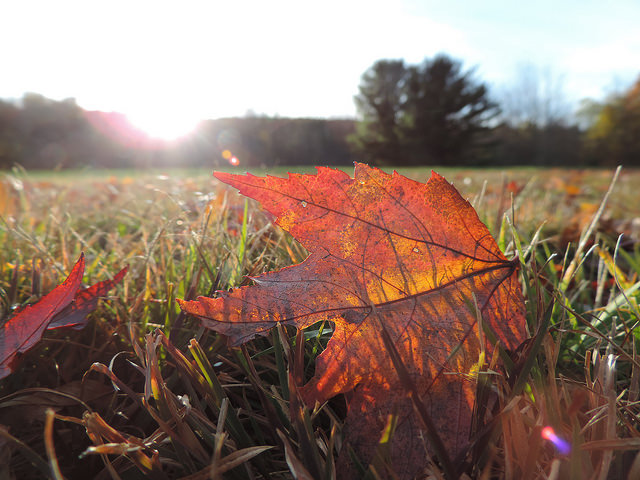I’ve been in the office quite a bit lately so when I had a long break in my schedule on a sunny November day, I took the opportunity to take a hike. Since I was close I headed to the Westside Overland Trail that runs 24 miles from the town of Harmony to Mayville in New York.
The sunlight set the stage, casting its warm glow through openings in the forest. The canopy was fairly open as most of the trees had dropped their leaves. The forest had lost the brilliant reds and oranges of early fall. Those colors were fading on the forest floor. I compulsively picked up the most brilliant of the leaves, knowing that they would never be as lovely as they were at that moment.
Left in this forest were the yellows and browns of the Quaking Aspen and the American Beech. Why do some trees hold on to their leaves so late? Aspen leaves drop before winter but young beech, along with oak, will keep their brown leaves until spring. For as much as we know about the world, there are answers that we still don’t have. Maybe dropping leaves in the spring gives the trees the nutrients when they really need it. Maybe the leaves protect the new buds from frost and deer browse. These are some theories but we are not certain. Maybe it is something else.

Snapping Turtle Photo by Katie Finch
Further down the trail, I came upon a shallow creek. It was evident that there was rain recently. The creek was flowing in the main channel but also in a secondary channel, leaving a small island of rocks in the middle. With the sun shining on some flat rocks, it seemed like perfect spot for lunch. As I hopped down the bank and across the stream, I realized I wasn’t alone. A large Snapping Turtle was on the edge of the creek looking so much like a rock I almost stepped on it.
The slow blink of an eye indicated it was alive. But it didn’t move the entire time I ate. Was it headed toward the creek for one more meal on this warm day or to the mud to bury itself for the coming winter?

Longer shadows in the fall. Photo by Katie Finch
Birds came in to investigate the disturbance. I first noticed the Black-capped Chickadees, bold and brave, the leaders of this flock with their “dee, dee, dee”. They moved from branch to branch, sometimes upside down to find insects and seeds. A White-breasted Nuthatch walked headfirst down a tree trunk searching out insects among the bark. A woodpecker hammered somewhere nearby and the flash of white tail feathers from a Dark-eyed Junco caught my eye.
These mixed flocks are common as winter approaches. No longer competing for territory and mates, these birds find safety in numbers as they forage for food in their own niches.
I was about to turn around and head back to my car when I met another hiker. After initial greetings and comments about the beautiful weather, my fellow hiker said disappointedly, “I didn’t really see anything so far.”
I wondered about that on my walk back. There were certainly things to see. Even the sunlight through the trees was a sight today. But what did that hiker expect to see?
How often do we go outside with expectations of what nature will be like? We go on a hike and expect to see animals. Not just chipmunks and birds we can’t identify but big animals- deer, bear, eagles. We expect to see something exciting!
We may hike with goals of distance and speed in mind to reach a destination at a certain time. Those ways of hiking have their place and can be their own kind of adventure. But what about the adventure of a wander, with no expectations as to what you will see and what will happen except that you will return safely? Wouldn’t a hike – and life – be different if we let the world present to us what is there that day, in that moment? And we pause and take it in? A challenge but a realistic one perhaps. If we can achieve that then we might find joy in the surprises rather than disappointment in what we didn’t see.
Keep in mind that November 19 in New York and November 28 in Pennsylvania are the opening days for the regular deer hunting season. While other hunting seasons have been prior to these dates, deer season brings more people into the woods. So know where you are hiking and the hunting rules for that property- and don some bright orange outerwear. If you are unsure, the property at Audubon was established as a sanctuary and doesn’t permit hunting.
Audubon Community Nature Center builds and nurtures connections between people and nature. The trails and Liberty viewing are open from dawn until dusk. The Nature Center is open daily from 1 p.m. until 4:30 p.m. except Saturday when it opens at 10 a.m. You can find more information at auduboncnc.org or by calling (716) 569-2345.
Katie Finch is a naturalist at Audubon.


Recent Comments